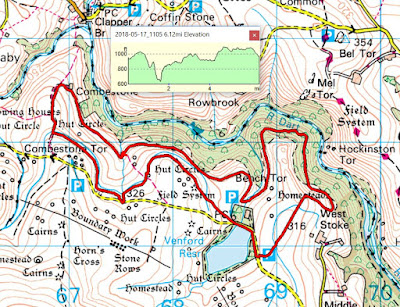Sometimes a day doesn't go quite as anticipated but there's always a Plan B...
 |
| Let's take a plane to Fair Isle and spend the day there. Sounds easy enough but we hadn't factored in the weather. Unfortunately we arrived at Tingwall airport (airstrip more accurately) to find that our flight had been postponed until at least noon because of poor visibility. Added to that was the potential problem of all of the relevant safety crew at the airstrip on Fair Isle attending the funeral of a well respected member of the community there. No safety crew: no landing. Given our limited time, Plan B smoothly swung into operation and we decided to go to Fetlar instead. Visiting Fair Isle would be a good enough reason to return to Shetland at some future date. |
 |
| Getting to Fetlar is a bit of an adventure in itself and involves a couple of ferries. We drove north on the Mainland to Toft and then took the ferry to Ulsta on Yell. The time for our connection to Feltlar meant driving at speeds exceeding the limit to get to our next ferry from Gutcha in the north east of the island. Yell itself is pretty barren in the interior with most of the activity taking place along the coast. To be honest, we didn't see anything on Yell that yelled at us to stop. |
 |
| It takes about 30 minutes to make the crossing from Gutcha to Hamars Ness on Fetlar. A friendly ferry-man, who lived on Fetlar, was quite incredulous that we were going there for the day. "There's nothing there", he said. As you can see the weather was rather overcast, which didn't bode well for our visit. Fetlar itself is the fourth largest in terms of area in Shetland and has a population of just over 60. Currently there are just four pupils in the primary/junior school: for their secondary education children have to travel to Lerwick and board for 5 days of the week. |
 |
| Nothing fancy, just a few more Greylag Geese seen from the RSPB hide at Funzie Mires, near the Loch of Funzie. Probably everyone with an interest in birds will have heard of this place as, at one time, it was the only place in the UK to see the Red Necked Phalarope. Phalaropes are a strange group of pot-bellied, long-necked, short-legged, needle-billed waders that prefer to be in the water, rather than at the edge. Strange in that phalarope females are more brightly coloured than the males who spend their time incubating the nests so need to be more camouflaged. Strange in that there is a role reversal that goes further than just plumage, females will compete for nest sites at breeding grounds, choose a male and then defend him against other females. Once the chicks arrive, the female leaves the male to raise them on his own. Girl power, eh? And we didn't see any as it was too early for them to arrive at this site. |
 |
| Funzie Bay with Nousta Ness to the left. It was quite a breezy day and the waves were building up. Not a place to strip off and go for a swim.as this was the North Sea, synonymous with cold water. |
 |
| On the way back to the car from Funzie Bay we came across this snipe lurking in the grass. It's a Common Snipe that has the wonderful Latin name of Gallinago gallinago. In fact this is a member of a local sub-species, Gallinago gallinago faeroeensis, seen in Orkney, Shetland, Iceland and the Faroe Islands. The sub-species seen everywhere is Gallinago gallinago gallinago, a name almost longer than the bird. |
 |
| Brough Lodge is a 19th-century Gothic mansion and is, to some, a rather romantic ruin overlooking the Colgrave Sound. But its origins have a sinister undertone as it was built by the Nicolson family, who were responsible for clearing Fetlar of many of its inhabitants (better use the land for sheep rather than people). It has been disused since the 1980s and, allegedly, the Brough Lodge Trust has recently started work to restore the building. I say 'alledgedly' because it seems that a lot of public money has gone their way with very little to show for it. Certainly there were signs of building having taken place but it was clear that nothing had been done for quite a while. |
 |
| To the left of the lodge is a castellated folly built on top of the site of an ancient broch. |
 |
| On the way back to the ferry I took the opportunity to 'bag' the trig point on Kirk Knowe. A standard Hotine column type built inside an old stone structure of some sort. There are 4 trig points on Fetlar, which strikes me as a lot for such a small place, and Kirk Knowe is the most accessible of these. I have read that some people go especially to Fetlar to 'bag' all four in a single day. Nice thought but there would have been mutiny in the ranks if I had suggested that. |
 |
| The views from Kirk Knowe would, on a clearer day, be far reaching but today? Only as far as Brough Lodge, with the misty hills of Yell in the background. |
 |
| Almost our own personal ferry as we made our way back from Fetlar to Unst, then to Yell and back to Mainland via the final ferry of the day (and have I mentioned the generous discounts for those over a certain age?). Once off the ferry at the Unst, we drove about 2 miles up the road and decided that the lure of fish and chips at Frankie's in Brae on the Mainland was irresistible. So we turned around, got back on the ferry and crossed to Yell. A mad dash across Yell got us to the terminal in good time to catch the next ferry across to the Mainland and then it was off to Frankie's. He did not disappoint. |



























































